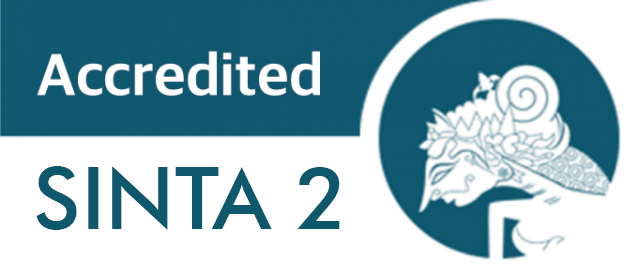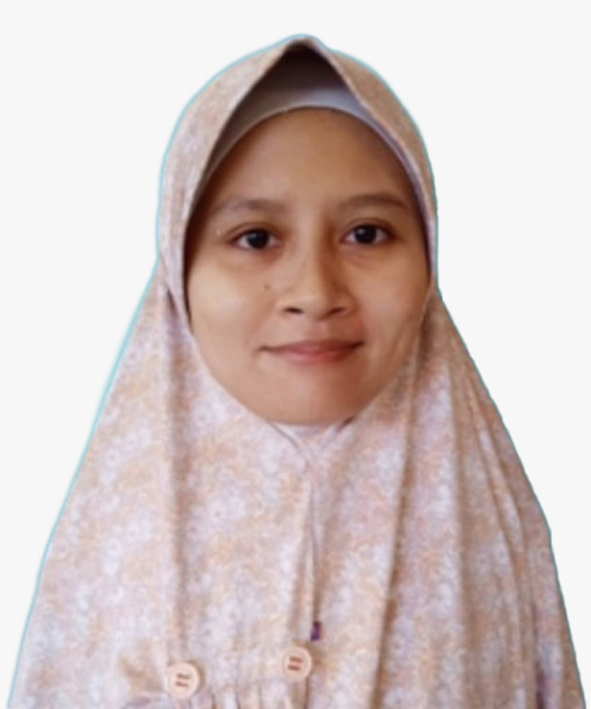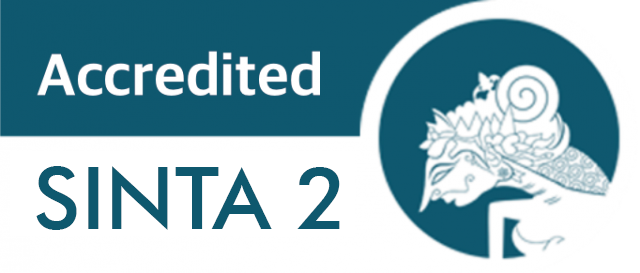Correlation Between Erectile Dysfunction and Severity Symptoms of Depression Through The Role of Self-Esteem and Psychosocial Stressor
Downloads
Background: Twenty two percent of men aged over 40 years suffer from erectile dysfunction moderate to severe degree. Twelve to twenty eight percent of men with erectile dysfunction report an impact on the relationship with the partner, body image, lowered self-esteem that might be a psychosocial stressor that cause symptoms of depression. Treatment of erectile dysfunction holistically is expected to improve a better life.
Objective: This study analyzed the correlation between erectile dysfunction and severity of depressive symptoms through the role of self-esteem and psychosocial stressors on patients with erectile dysfunction in Andrology Outpatient Clinic of Dr. Soetomo General Hospital.
Methods: This study using correlation analytic with cross sectional design. Research subject were patients who have erectile dysfunction in Andrology Outpatient Clinic of Dr. Soetomo General Hospital, collected using consecutive sampling. The research instruments used were The International Index of Erectile Function-5, Holmes-Rahe, Self-Esteem Rosenberg and Beck Depression Inventory
Results: Thirty eight research subjects met the inclusion criteria. Statistical analysis revealed erectile dysfunction correlated with self-esteem (p=0.016 r=0,388), no correlation between self-esteem and the severity of depressive symptoms (p=0.116 r=0,259), psychosocial stressors correlated with the severity of depressive symptoms (p=0.001 r=0,001), erectile dysfunction correlated with the severity of depressive symptoms (p=0,000 r=-0,559)
Conclusion: This study found correlation between erectile dysfunction and severity of depressive symptoms both directly, but in this case does not involve the role of self-esteem and psychosocial stressors
Farca Z.E., Velez F.V., Eransus M.C., Bravo O.A., Tseng L.J., Stecher V.J., "Self-esteem, confidence and relationship satisfaction in men with erectile dysfunction: a randomized, parallel-group, double blind, placebo-controlled study of sildenafil in mexico,” Int. J. Impot. Res., vol. 20, pp. 402–408, 2008.
Park K., Hwang E.U., Kim S.O, "Prevalence and medical management of erectile dysfunction in asia,” Asian J. Androl., vol. 13, pp. 543–549, 2011.
Prasad K.N., Kumar P.S., Poovitha, "Perception about penis length, penile erection and quantity of semen among young adult men pondicherry, india-community based cross sectional study,” Sch. J. Appl. Med. Sci., vol. 2(4A), pp. 1214–1219, 2014.
Pastuzak A.W., Badhiwala N., Lipshultz L., Khera M., "Depression is correlated with the psychological and pshysical aspects of sexual dysfunction in men,” Int. J. Impot. Res., vol. 25, pp. 194–199, 2013.
Fatt K.Q, "Erectile dysfunction and quality of life in Nunes K (ed),” in Erectile Dysfunction Disease-Associated Mechanism and Novel Insight into Therapy, Rijeka, Croatia: InTech Publisher, 2012.
Sowislo J.F., Orth U., "Does low self-esteem predict depression and anxiety? a meta-analysis of longitudinal studies,” Psychol. Bull., vol. 139 (1), pp. 213–40, 2012.
Udo I.A., Udoh S.B., "Psychosocial factors associated with erectile dysfunction in the niger delta region of nigeria,” J. Fam. Med. Med. Sci. Res., vol. 4, pp. 1–4, 2015.
Smith J.F, "Sexual function and depressive symptoms among male north american medical students,” J. Sex. Med., vol. 7, pp. 3909–17, 2010.
Sumarni D.W., Maulina D.S., "Pengaruh stresor psikososial terhadap depresi dan gangguan kesehatan reproduksi guru perempuan sekolah dasar negeri,” Ber. Kedokt. Masy., vol. 22, pp. 107–114, 2006.
Rajkumar P.R., Kumaran K.A, "Depression and anxiety in men with sexual dysfunction: a retrospective study,” Compr. Psychiatry, vol. 60, pp. 114–118, 2015.
Shiri R., Koskimaki J., Tammela L.J.T., Hakkinen J., Auvinen A., Hakama M., "Bidirectional relationship between depression and erectile dysfunction,” J. Urol., vol. 177, pp. 669–673, 2007.
Kirana P.S., Porst H., "Erectile dysfunction in Kirana P.S., Tripodi F., Reisman Y., Porst H., (eds),” in The EFS and ESSM Syllabus of Clinical Sexology, 1st edition., Amsterdam: Medix Publisher, 2013.
Heidelbaugh J.J & Arbor A, "Management of erectile dysfunction,” Am. Fam. Physician, vol. 81, pp. 305–312, 2010.
Guindon M.H, "What is self-esteem in Guindon (ed),” in Self-Esteem Across the Lifespan: Issue and Intervention, LLC, New York: Taylor and Francis Group, 2010.
Mruk C.J, "The crucial issue of defining self-esteem in Mruk C.J (ed),” in Self-esteem research, theory and practice: toward a positive psychology of self-esteem 3rd ed., New York: Springer Publishing Company, Inc., 2006.
Girdano D.A., Dusek D.E., Everly G.S., Controlling Stress and Tension, 6th ed. Boston: Allyn & Bacon Press, 2001.
Dean J., Boer B.J., Graziottin A., Hatzichristou D., Heaton J., Tailor A, "The role of erection hardness in determining erectile dysfunction treatment outcome,” Eur. Urol. Suppl., vol. 5, pp. 767–772, 2006.
Lam W.R., Mok H., Depression, Oxford Psychiatry Library 1st ed. New York: Oxford University Press Inc, 2008.
Saddock B.J, Saddock V.A., "Mood disorder in (ed) Kapplan and Saddock,” Synopsis of Psychiatry 10th ed., London: William and Wilkins, 2007, pp. 527–562.
McVary T.K, "Erectile dysfunction,” N. Engl. J. Med., vol. 357, pp. 2472–2481, 2007.
Donnellan M.B., Trzesniewski K.H., Robins R.W., Moffitt T.E., Caspi A, "Low self-esteem is related to aggression, antisocial behavior, and delinquency,” Psychol. Sci. J., vol. 16, no. 4, pp. 328–335, 2005.
Shamloul R & Ghanem H, "Erectile dysfunction,” Seminar, vol. 381, pp. 153–165, 2013.
Nicolosi E., Moreira E.D., Villa M., Glasser D.B, "A population study of the association between sexual function, sexual satisfaction and depresive symptoms in men,” J. Affect. Disord., vol. 82, pp. 235–243, 2004.
Heatherton T.F & Wyland C.L, "Assessing self-esteem in Lopez S & Snyder R (ed),” in Assessing Positive Psychology, Washington DC: Washington Press, 2003.
Copyright (c) 2019 Hendriks S.P Sirait, Sasanti Juniar, Tjahjo Djojo Tanojo

This work is licensed under a Creative Commons Attribution-ShareAlike 4.0 International License.
1. Copyright of this journal is possession of the Author, by the knowledge of the Editorial Board and Journal Manager, while the moral right of the publication belongs to the author.
2. The journal allows the author(s) to retain publishing rights without restrictions.
3. The articles are published under a Creative Commons Attribution Share-Alike (CC BY-SA) license. Many research funding bodies prefer the CC BY-SA license because it allows for maximum dissemination and re-use of open access materials. Users are free to share (copy, distribute, and transmit) and remix (adapt) the contribution under this license, including for commercial purposes, as long as they attribute the contribution in the manner specified by the author or licensor.




























